How to Correctly Identify the Trend
- Part II
In last week's article I discussed the way I
determine the trend prior to entering trades in
the FX market. While the article was rudimentary
in terms of its approach, it drove the point
home. Naturally, the drawback to that
one-dimensional approach is that it only dealt
with determining the trend on one time frame.
While this style/approach may suit some traders,
I find it more efficient to look at multiple
time frames as a way to potentially increase the
odds of success on a trade.
This week, I will build upon the concepts
from last week and begin to demonstrate how
looking at one or two additional time frames can
be a useful process.
First, let's review what was discussed last
week. What is the trend on the chart of EUR/USD
below?
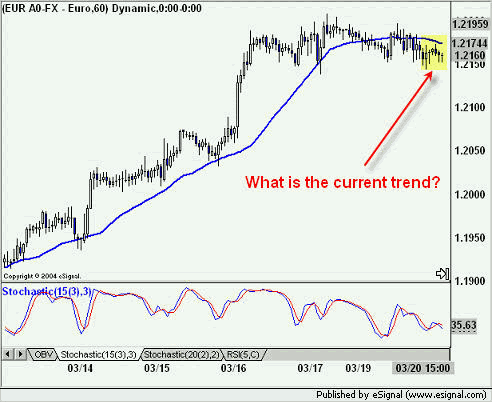
There are actually two correct answers:
1. Sideways
2. Down
Prices are below a slightly downward sloping
moving average. This is not a chart that
demonstrates an up-trend. However, what is your
answer if at the same time you were looking at
the 240-min chart of EUR/USD versus the 60-min
chart noted above?
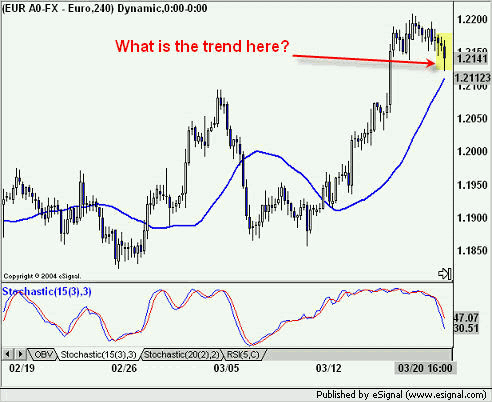
Here, there is only one answer; the trend is
'Up'.
So, when you combine the analysis of both
charts you sort of have a dilemma. If you are
looking to execute the trade off the 60-min
chart, it makes it tough to go short (despite
60-min trend being down) when the next higher
time frame is indicating that you are going
against the overall trend. Conversely if you are
looking to execute off the 240-min chart, the
60-min chart is less relevant and you would look
to isolate high probability long entries.
Higher time frames should always take
precedent.
This is the part of trading where it can
become more 'art' than 'science' and hence
highlights the serious limitations of a purely
mechanical approach. As we get further into this
series of lessons, it will become even clearer
how subjective the distinctions can become.
Let's look at another example. In this case
we are presented with three time frames for
analysis. While the 240-min and daily charts are
in a clear downtrend, the 60-min chart is likely
to limit downside moves due to its current
technical condition.
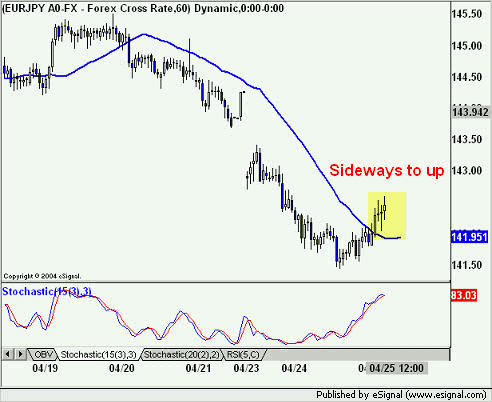
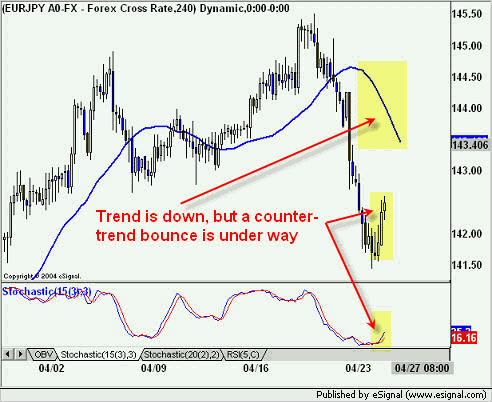
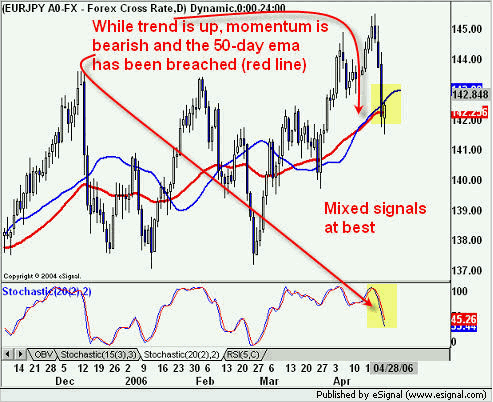
What is the answer then? Wait for more
information.
For those that are familiar with my work, you
know that I am always of the mindset that
sitting on your hands can be the most effective
trade. Is there a way for a trader to make money
on EUR/JPY to the long side? Absolutely, but the
probabilities of this trade playing out are
reduced because of the higher time frames.
While I understand that this week's lesson
may have been a bit confusing and left you with
no clear answers, (it's OK, it is a tough
concept to grasp when you continue to add new
variables) in the lessons that follow, there
will be new studies added that will begin to
offer you an ideal and relatively simple way to
identify the trades that have the higher
probability of playing out. While trend
identification is key, it is only one piece of
the puzzle. |